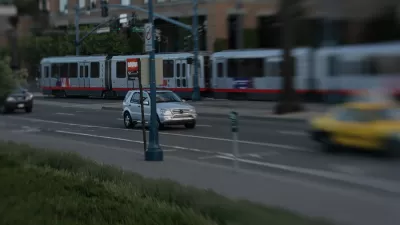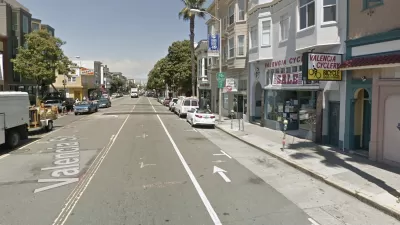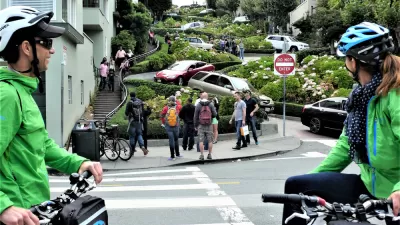Additional disincentives for driving (i.e., congestion pricing and new parking fees) are on the mayor's agenda in San Francisco.

"Car-free Market Street was the first step, but traffic in downtown San Francisco is often still a nightmare at rush hour," writes Madeline Wells.
Mayor Breed is arguing for congestion pricing as an additional measure to reduce automobile trips around the city. Mayor Breed called for congestion pricing in a letter to the San Francisco Municipal Transportation Agency’s Board of Directors.
According to Wells, Mayor Breed is specifically calling for tolls on busy roads at peak times as well as charges for street parking on Sundays and evenings. Mayor Breed targeted SoMa (South of Market) and Downtown for the reforms.
"Already, the San Francisco County Transportation Authority is considering charging a fee to drive in these areas during rush hour, with an expectation to release proposals on the topic early next year. However, the introduction of these measures would require San Francisco to pass legislation that allows the city to charge fees for the use of public roads," according to Wells.
Rachel Swan originally reported the news about Mayor Breed's advocacy for congestion pricing in a paywalled article for the San Francisco Chronicle.
San Francisco is already among the nationwide leaders in wielding planning tools to reverse the dominance of automobiles in urban areas. New York City blocked car traffic on 14th Street in Manhattan, like San Francisco did on Market Street, and is moving forward with a congestion pricing scheme with support from the city and the state.
FULL STORY: London Breed presses for Sunday and evening parking meters, congestion pricing

Study: Maui’s Plan to Convert Vacation Rentals to Long-Term Housing Could Cause Nearly $1 Billion Economic Loss
The plan would reduce visitor accommodation by 25,% resulting in 1,900 jobs lost.

North Texas Transit Leaders Tout Benefits of TOD for Growing Region
At a summit focused on transit-oriented development, policymakers discussed how North Texas’ expanded light rail system can serve as a tool for economic growth.

Why Should We Subsidize Public Transportation?
Many public transit agencies face financial stress due to rising costs, declining fare revenue, and declining subsidies. Transit advocates must provide a strong business case for increasing public transit funding.

How to Make US Trains Faster
Changes to boarding platforms and a switch to electric trains could improve U.S. passenger rail service without the added cost of high-speed rail.

Columbia’s Revitalized ‘Loop’ Is a Hub for Local Entrepreneurs
A focus on small businesses is helping a commercial corridor in Columbia, Missouri thrive.

Invasive Insect Threatens Minnesota’s Ash Forests
The Emerald Ash Borer is a rapidly spreading invasive pest threatening Minnesota’s ash trees, and homeowners are encouraged to plant diverse replacement species, avoid moving ash firewood, and monitor for signs of infestation.
Urban Design for Planners 1: Software Tools
This six-course series explores essential urban design concepts using open source software and equips planners with the tools they need to participate fully in the urban design process.
Planning for Universal Design
Learn the tools for implementing Universal Design in planning regulations.
City of Santa Clarita
Ascent Environmental
Institute for Housing and Urban Development Studies (IHS)
City of Grandview
Harvard GSD Executive Education
Toledo-Lucas County Plan Commissions
Salt Lake City
NYU Wagner Graduate School of Public Service





























